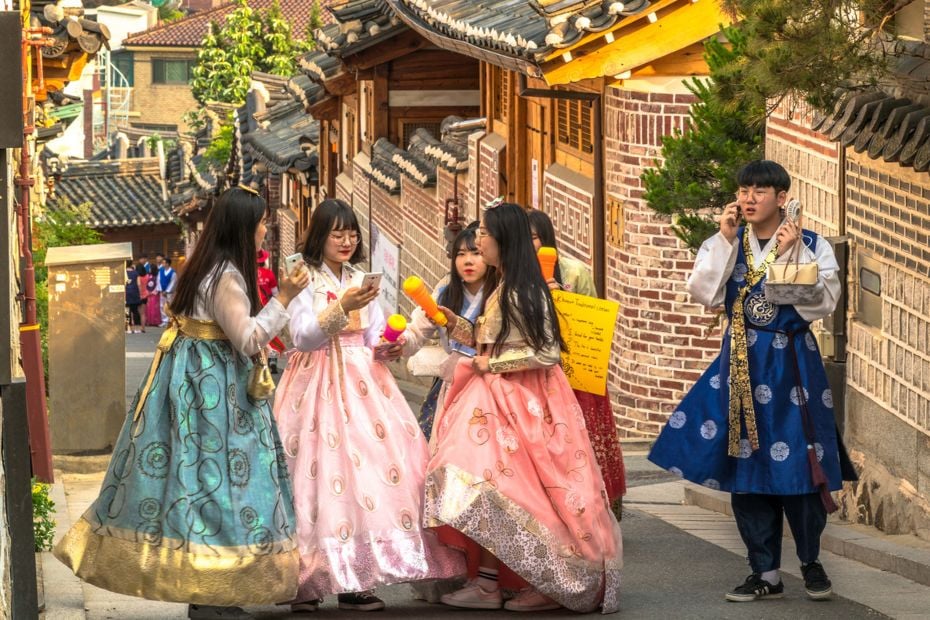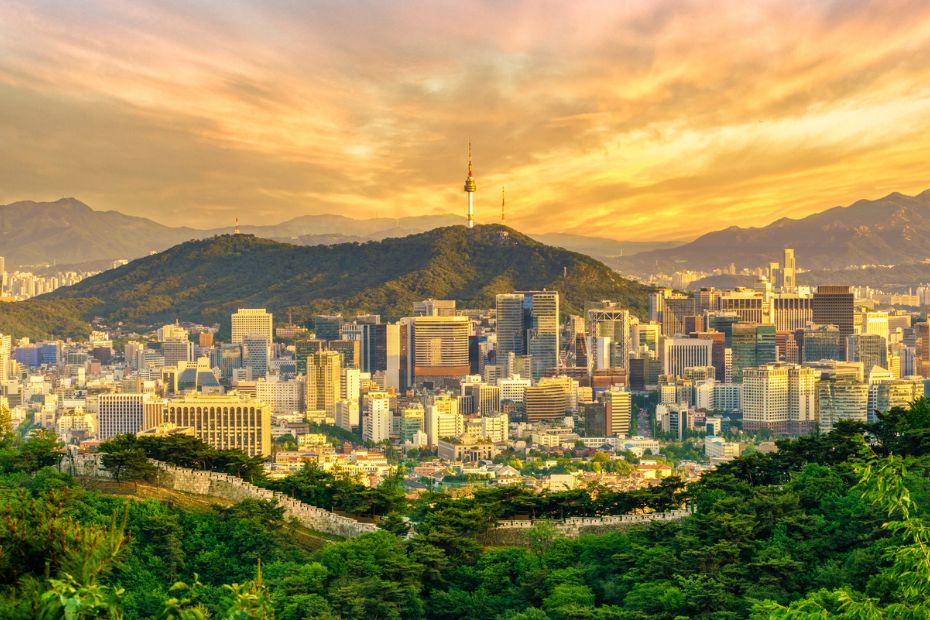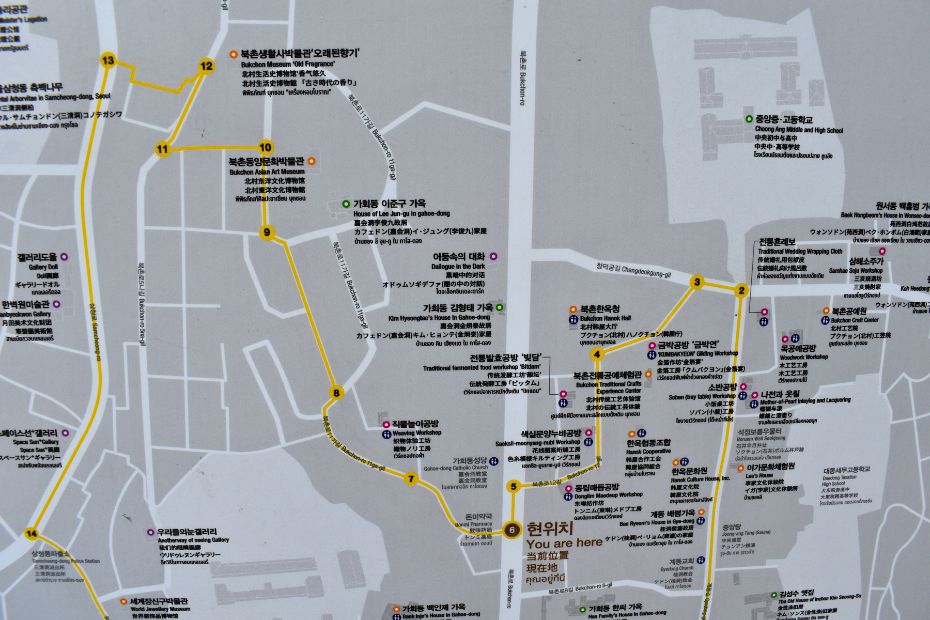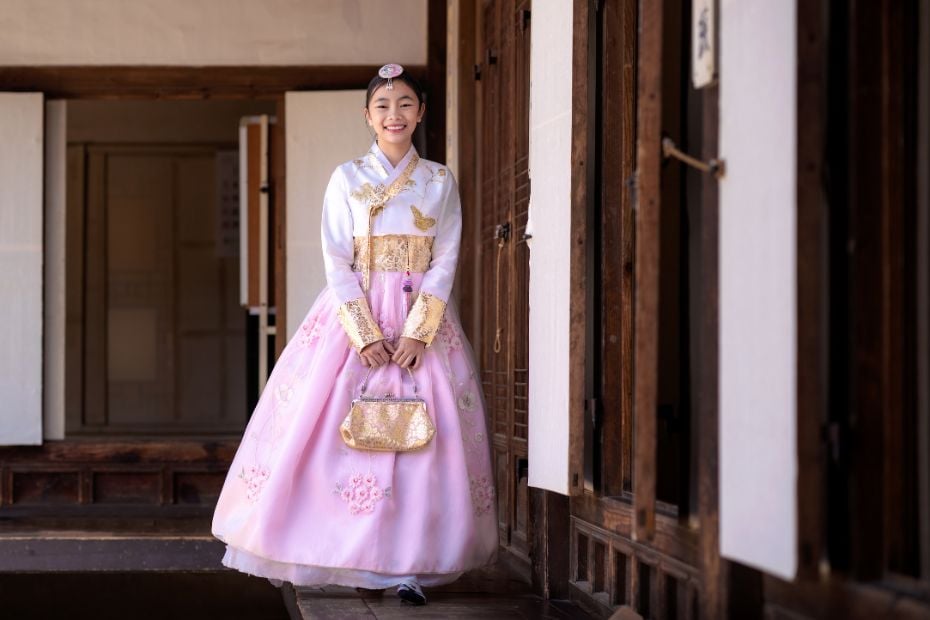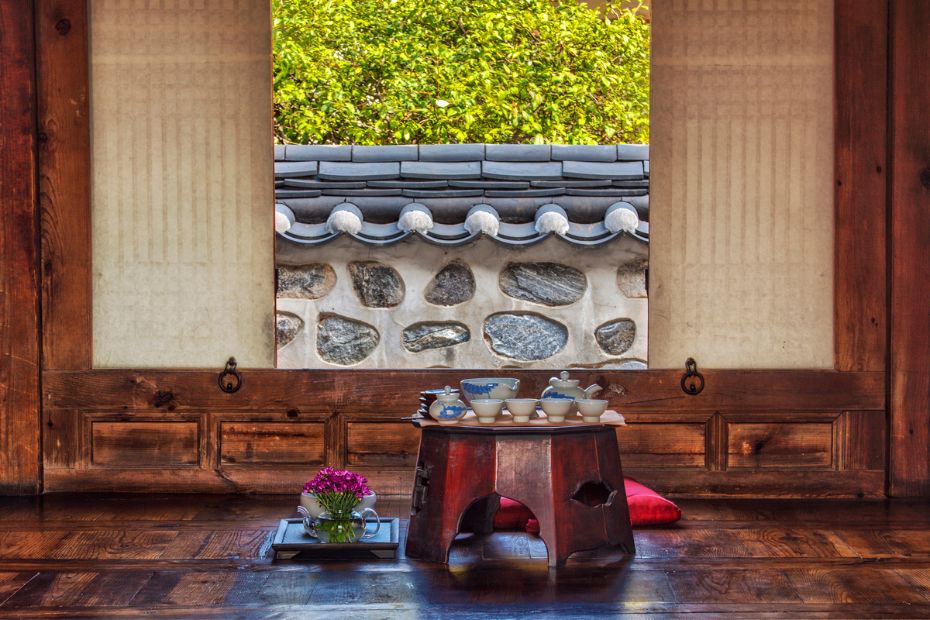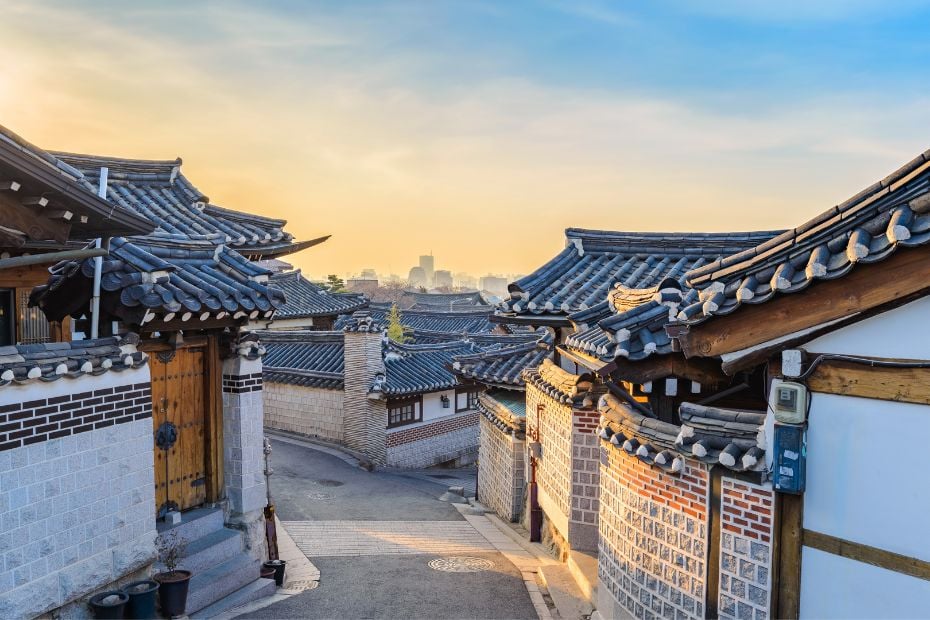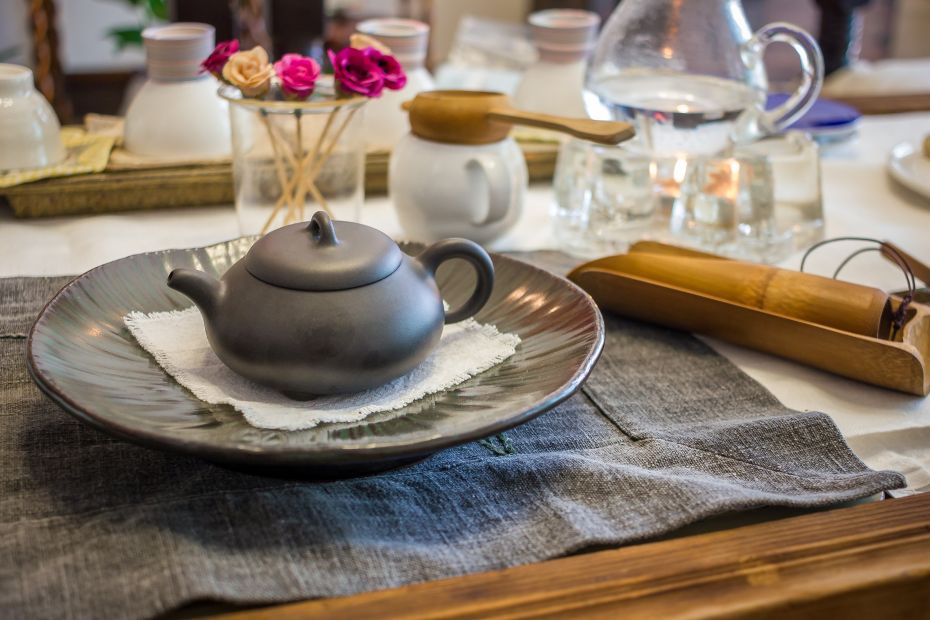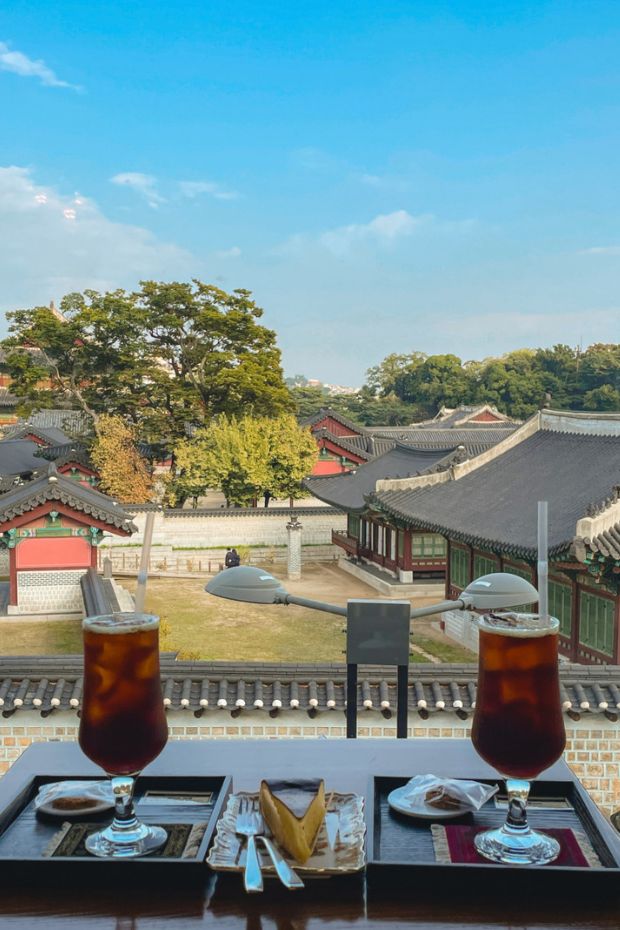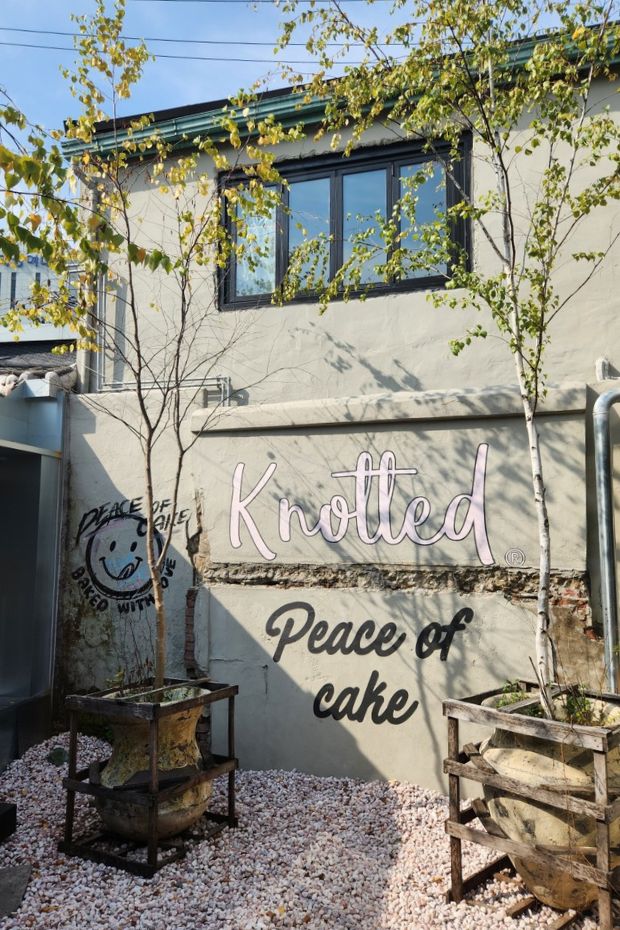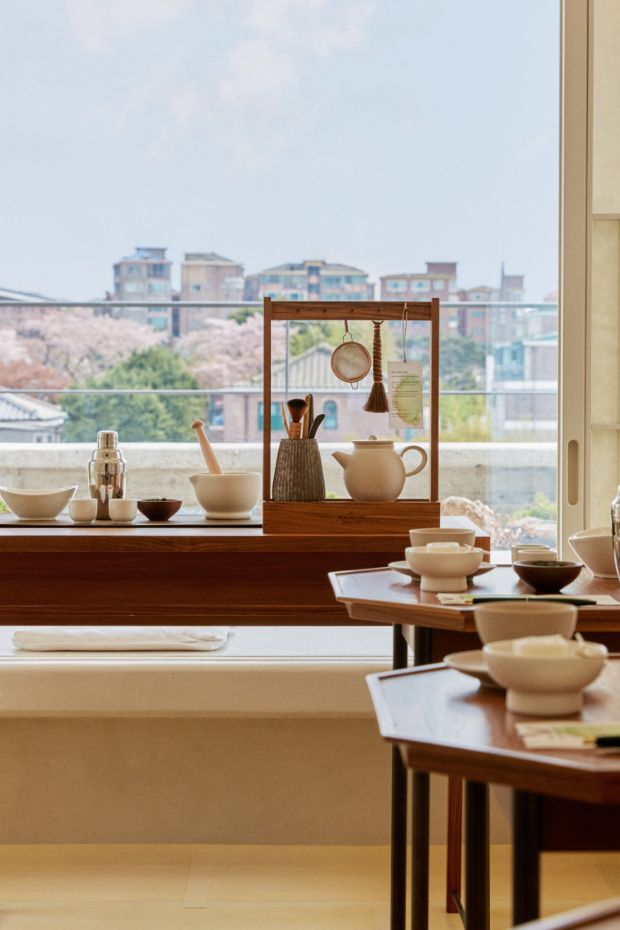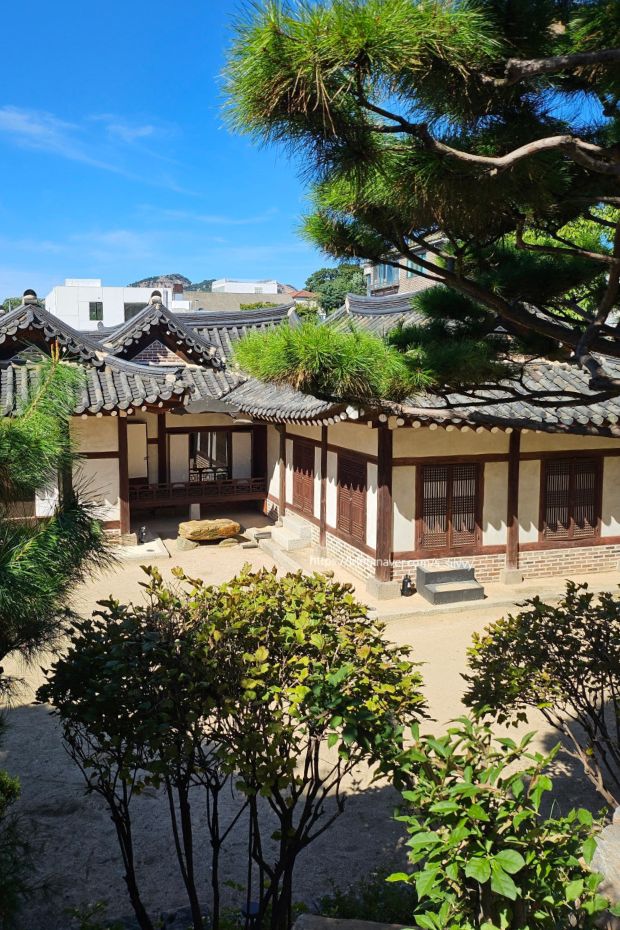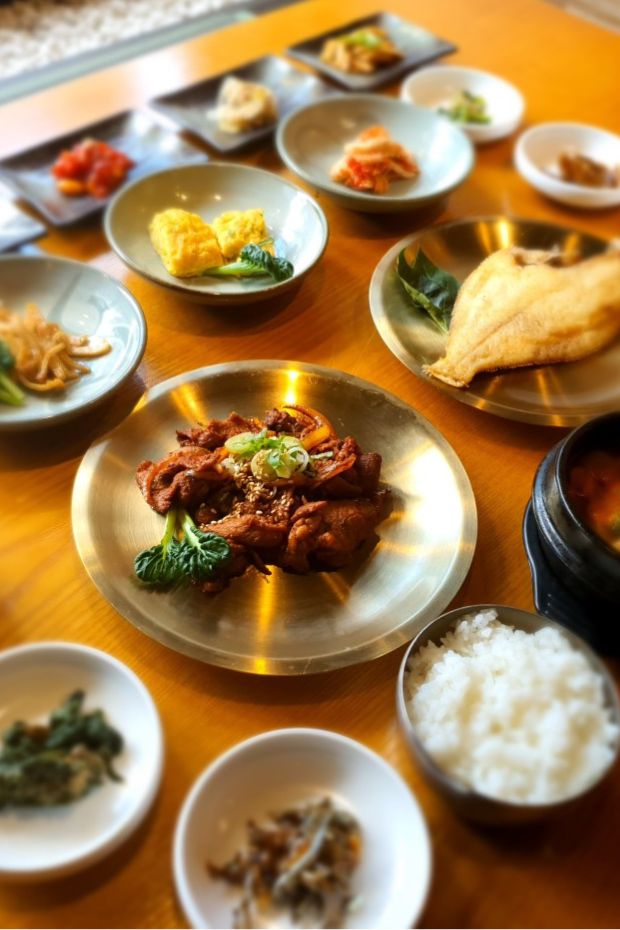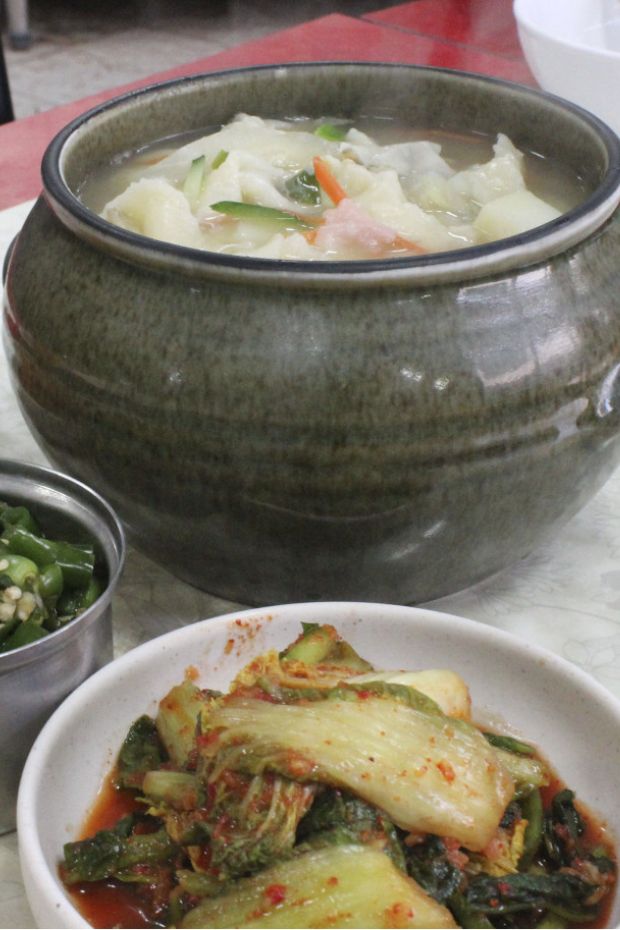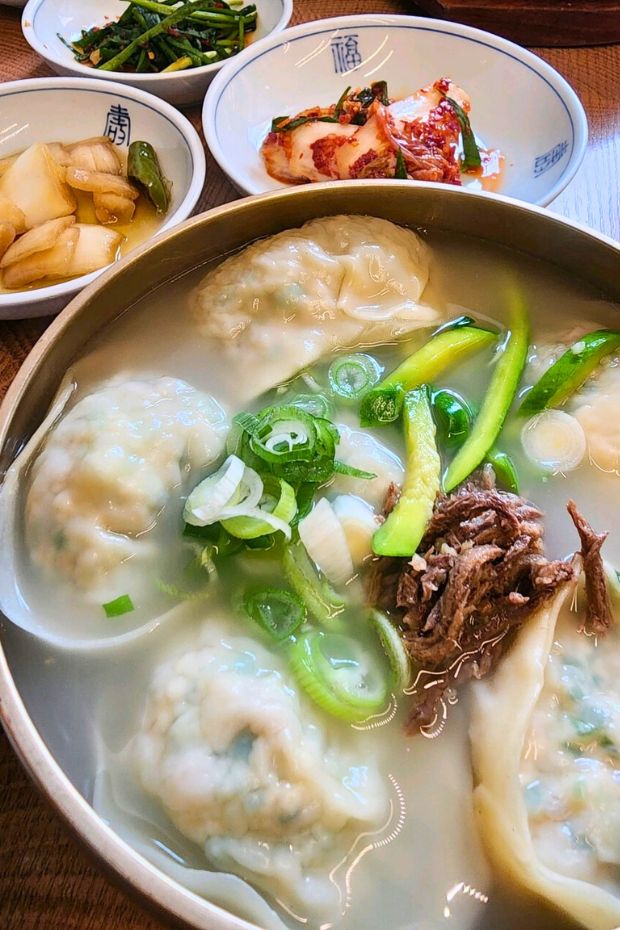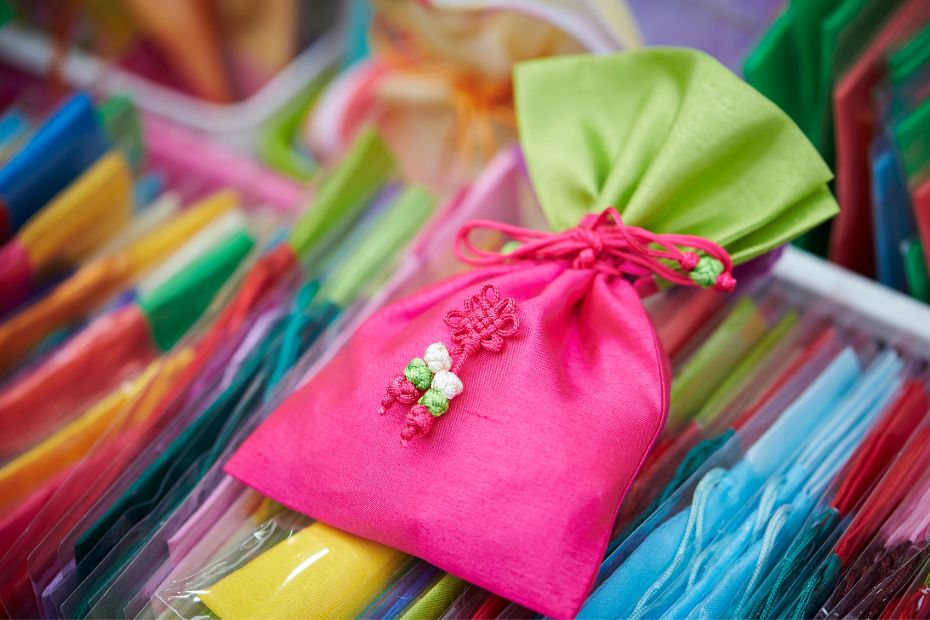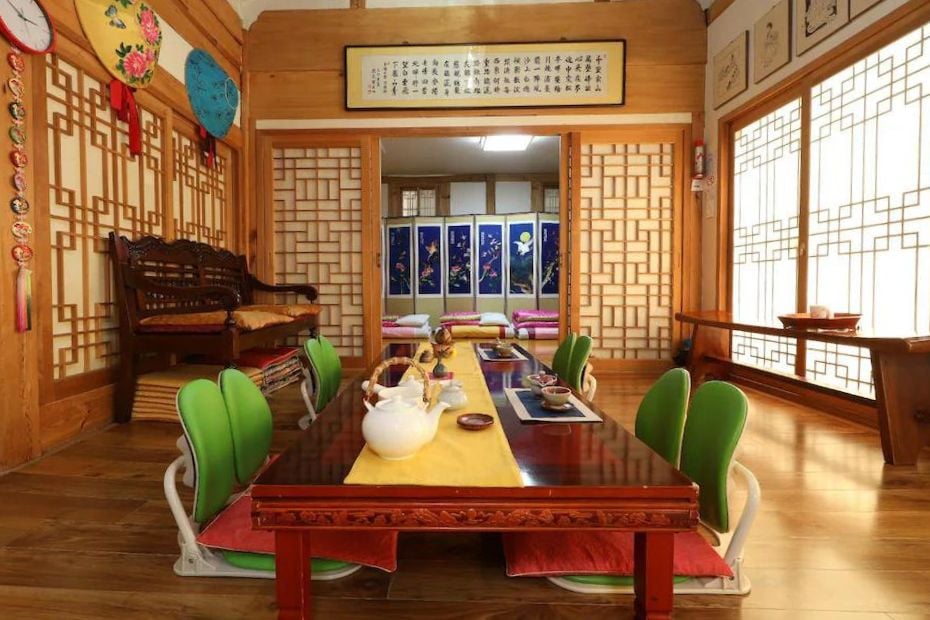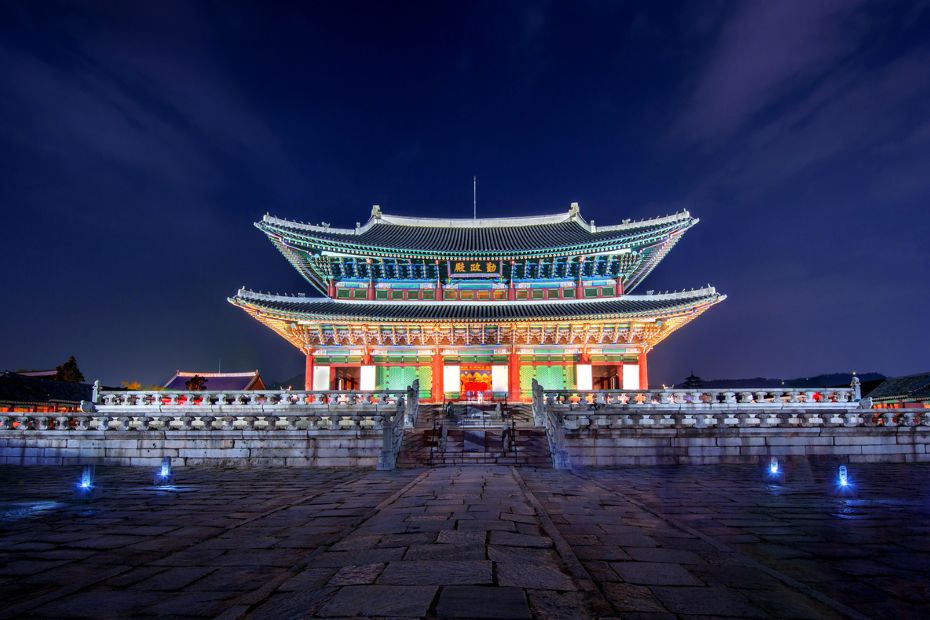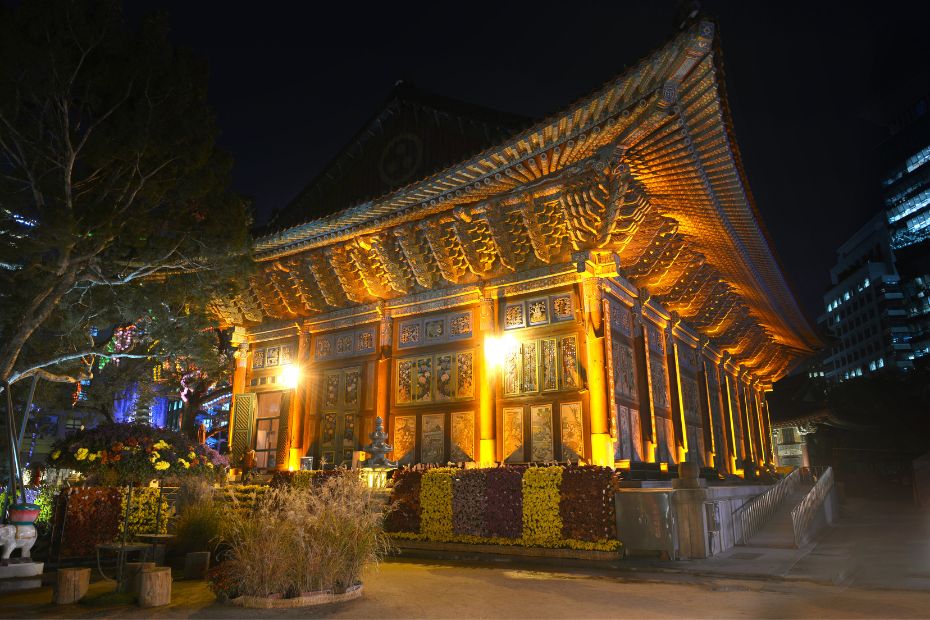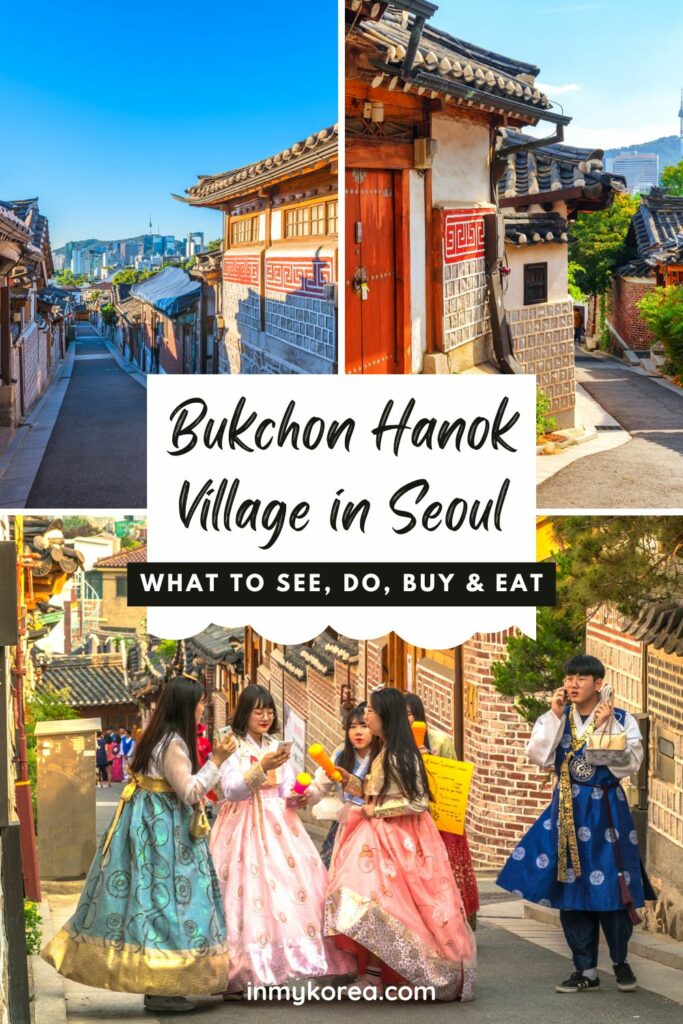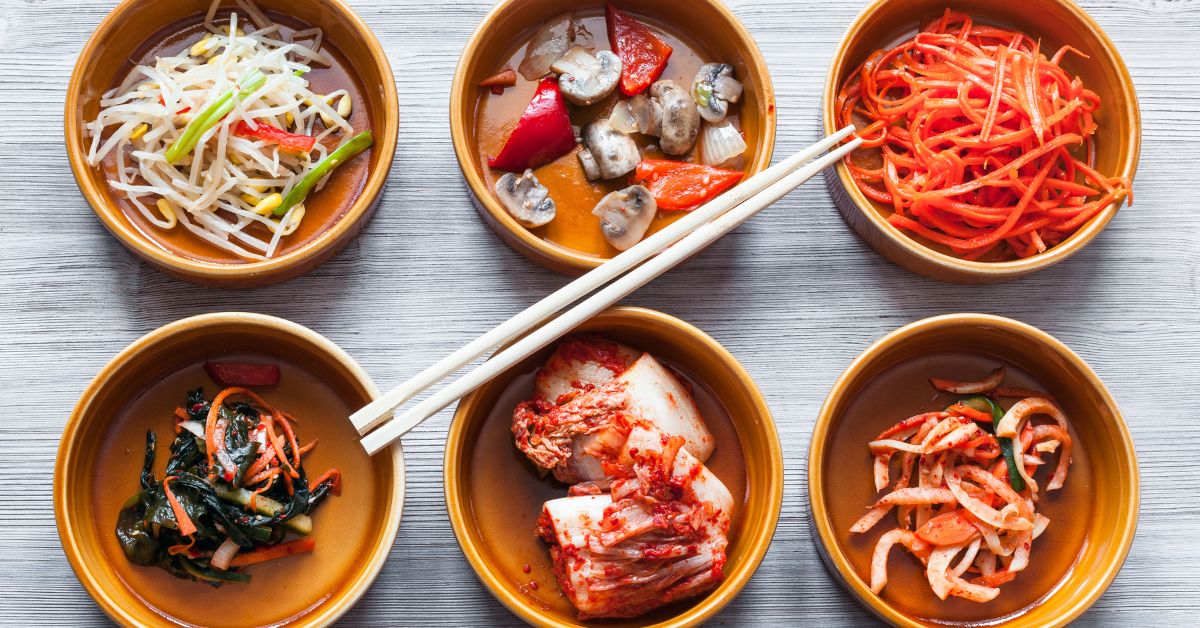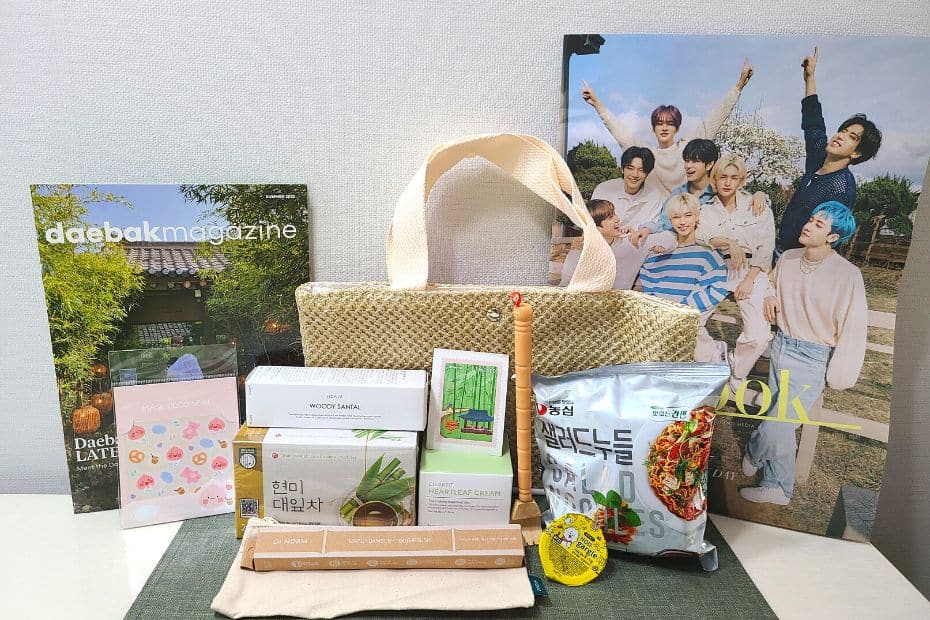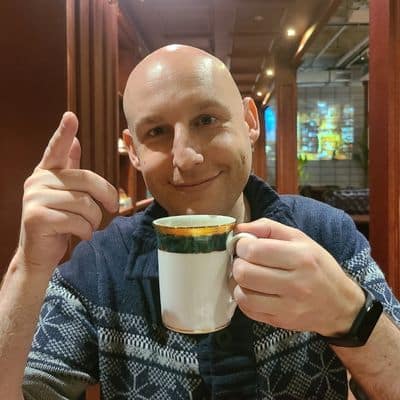With its beautifully preserved traditional hanok houses that date back to the Joseon Dynasty, Bukchon Hanok Village offers a mesmerising journey into Korea’s illustrious past and insights into it’s cultural present. There are so many things to do in Bukchon Hanok Village, it truly is a must-see destination in central Seoul and an essential addition to any Seoul itinerary.
As you explore the labyrinthine alleyways, you’re not just walking on cobblestone streets but on layers of history, each stone whispering tales from bygone eras. Beyond its architectural allure, Bukchon is a treasure trove of cultural experiences, delectable culinary delights, and unique shopping opportunities.
Whether you’re a history enthusiast, a culture vulture, or simply looking to escape the urban jungle, Bukchon Hanok Village promises to be an experience like no other. Let the magic of this majestic district envelop you in this guide to the best things to do in Bukchon Hanok Village.
Affiliate Disclaimer: This site contains affiliate links and I may earn commission for purchases made after clicking these links.
Why Should You Visit Bukchon Hanok Village?
Nestled amidst the bustling streets of South Korea’s vibrant capital, Seoul, lies a hidden gem that’s captured the hearts of travellers and locals alike – Bukchon Hanok Village. Stepping into this timeless neighbourhood is like taking a journey back in time, where the past melds with the present, offering a unique experience that’s enchanting and enriching.
Here are some reasons you should definitely visit Bukchon Hanok Village in Seoul:
1. Preserving Tradition: Bukchon Hanok Village is a living testament to South Korea’s rich cultural heritage. Here, you’ll find a cluster of beautifully preserved traditional Korean houses, known as ‘hanok’ dating back to the Joseon Dynasty. Walking through the narrow alleyways, you’ll encounter the exquisite architecture, wooden beams, and graceful rooftops that transport you to a bygone era.
2. Historical Significance: This village, nestled between two iconic palaces – Gyeongbokgung and Changdeokgung – holds immense historical importance. It once housed aristocrats and high-ranking officials during the Joseon Dynasty, making it an ideal place to delve into the country’s royal history.
3. Picturesque Views: Bukchon Hanok Village is not only a haven for history buffs but also a paradise for photographers. As you stroll through the labyrinthine streets, you’ll be greeted with stunning vistas of traditional houses set against the backdrop of modern Seoul’s skyscrapers. Capture the blend of old and new, creating a mesmerising juxtaposition. You’ll also find famous K-Drama scenes here.
4. Cultural Immersion: Beyond the charming facades, Bukchon Hanok Village offers immersive cultural experiences. Visitors can partake in various activities like traditional tea ceremonies, calligraphy lessons, and even dressing up in hanbok, allowing you to step into the shoes of the locals.
5. Art and Crafts: For art enthusiasts, the village is home to numerous galleries and workshops where you can witness and purchase intricate Korean crafts, pottery, and artworks. It’s a fantastic opportunity to take home a piece of Korean culture. In the heart of bustling Seoul, Bukchon Hanok Village offers a serene escape, a slice of history, and a cultural journey rolled into one.
Whether you’re a history buff, a culture seeker, or simply someone looking to escape the urban chaos, a visit to Bukchon Hanok Village promises a memorable and enriching experience that will stay with you long after you’ve left its charming streets.
Join in and uncover the hidden treasures as I share my insider tips on what to see, do, and buy in this enchanting enclave. Find out all the best things to see and do in Buckhon Hanok Village, where to eat and drink, and lots of reasons why this should certainly be on your Seoul itinerary.
Where Is Bukchon Hanok Village?
Tucked away in the heart of Seoul, Bukchon Hanok Village is a serene haven just north of the bustling Insadong district. This historic neighbourhood is conveniently located between two of Seoul’s most iconic palaces, Gyeongbokgung and Changdeokgung, making it easily accessible by foot.
Nearest Subway Station: Anguk Station (Line 3 – Orange). Use exits 1 or 2 to get to the Bukchon Hanok Village. The village spreads out to the north-east and north-west of this station.
If you want to take a taxi or plan your way to Bukchon Hanok Village, copy and paste this address into Kakao Taxi or Naver Map to help you get to the heart of Bukchon.
Address in Korean: 서울 종로구 북촌로 39
When you arrive at Bukchon Hanok Village, there are maps available from Anguk subway station or from tourist information stands in the village. There are also maps of the village with key areas to visit highlighted. The maps also come with recommended walking paths around Bukchon.
Bukchon Hanok Village Opening Hours
Bukchon Hanok Village is open all day, every day, so plan your visit at a time that suits you best and uncover the magic of this historical gem in the heart of Seoul. However, as this is an occupied neighbourhood, please be considerate of making noise, especially at night.
Unlike many other attractions, this charming neighbourhood never closes its doors, allowing you the flexibility to explore at your own pace. Whether you choose to bask in the morning serenity, immerse yourself in afternoon culture, or embrace the enchanting night ambience, Bukchon Hanok Village is always ready to offer its timeless beauty and cultural treasures.
How Long Do You Need In Bukchon Hanok Village?
While the time you spend in Bukchon Hanok Village largely depends on your interests, a few hours are typically sufficient to capture its essence. You can leisurely explore the winding alleys, visit museums, sip tea in traditional houses, and even take a hanbok photo shoot within this timeframe.
For a more in-depth experience, consider dedicating half a day to thoroughly soak up the culture, engage with artisans, and enjoy a meal at one of the cosy eateries. Whether you have a brief window or a leisurely schedule, Bukchon Hanok Village offers a memorable experience that you won’t forget.
Bukchon Hanok Village Entrance Fee?
There is no entrance fee to explore Bukchon Hanok Village as this area is a residential area and open to the public. However, some of the museums and other attractions in the area may charge a fee to enter, so be sure to check when you go into one of the hanok houses.
Planning to visit Korea? These travel essentials will help you plan your trip, get the best deals, and save you time and money before and during your Korean adventure.
Visas & K-ETA: Some travellers to Korea need a Tourist Visa, but most can travel with a Korean Electronic Travel Authorisation (K-ETA). Currently 22 Countries don’t need either one.
How To Stay Connected: Pre-order a Korean Sim Card or a WiFi Router to collect on-arrival at Incheon Airport (desks open 24-hours). Alternatively, download a Korean eSIM for you travels.
Where To Stay: For Seoul, I recommend Myeongdong (convenient), Hongdae (cool culture) or Gangnam (shopping). For Busan, Haeundae (Beach) or Seomyeon (Downtown).
Incheon Airport To Seoul: Take the Airport Express (AREX) to Seoul Station or a Limo Bus across Seoul. Book an Incheon Airport Private Transfer and relax to or from the airport.
Korean Tour Operators: Tour companies that have a big presence in Korea include Klook, Trazy, Viator, and Get Your Guide. These sites offer discounted entry tickets for top attractions
Seoul City Passes: Visit Seoul’s top attractions for free with a Discover Seoul Pass or Go City Seoul Pass. These passes are great for families and couples visiting Seoul – you can save lots.
How To Get Around: For public transport, grab a T-Money Card. Save money on Korea’s high speed trains with a Korea Rail Pass. To see more of Korea, there are many Rental Car Options.
Travel Money: Use money exchanges near Myeongdong and Hongdae subway stations for the best exchange rates. Order a Wise Card or WOWPASS to pay by card across Korea.
Flights To Korea: I use flight comparison sites such as Expedia and Skyscanner to find the best flights to Korea from any country. Air Asia is a good option for budget flights from Asia.
How To Learn Korean: The language course from 90 Day Korean or Korean Class 101 both have well-structured lessons and lots of useful resources to help you learn Korean.
What To See And Do In Bukchon Hanok Village
Step into the timeless embrace of this ancient neighbourhood and you’ll find yourself spoiled for choice with an array of captivating things to do in Bukchon Hanok Village. Whether you’re a history buff, a culture enthusiast, or a curious traveler, there’s something for everyone in Bukchon Hanok Village.
Here are 10 of the best things to see and do in Bukchon Hanok Village:
1. See Hanok Architecture: The very essence of Bukchon lies in its traditional hanok houses. Wander through the labyrinthine streets to admire these beautifully preserved structures, each with its unique charm and history. Be sure to visit the Bukchon Traditional Culture Center, where you can learn more about hanok architecture and its significance.
2. Wear Hanbok: Embrace the spirit of the past by donning a hanbok, Korea’s traditional attire. Numerous rental shops offer a wide selection of vibrant hanboks. Once dressed, explore the village like a Joseon-era noble, capturing timeless photos against the backdrop of historic hanok. You can rent Korean hanbok from many places in Bukchon Hanok Village or reserve hanbok online.
3. Visit The Bukchon Traditional Culture Center: The Bukchon Traditional Culture Center serves as an excellent introduction to the village’s history and culture. Here, you can enjoy informative exhibitions, cultural workshops, and guided tours that provide insights into the heritage of Bukchon.
4. Explore Galleries and Workshops: Discover the artistic side of Bukchon by visiting the numerous art galleries and craft workshops tucked away in the village. These spaces showcase local talent and offer opportunities to observe artisans creating traditional crafts like pottery, calligraphy, and more.
5. Check Out The Gahoe Museum: This museum is a hidden gem within Bukchon. It features exhibitions and displays that delve into the history and culture of the area, providing valuable insights into the traditions that have shaped Bukchon Hanok Village.
6. Dine At A Traditional Tea House: Sip on traditional Korean tea in one of Bukchon’s serene tea houses. These cozy spots provide a tranquil escape where you can enjoy not only aromatic teas but also the ambiance of a bygone era. If a cup of tea isn’t your cup of tea, there are plenty of cafes, too.
7. See The Sights From The Bukchon Observatory: For panoramic views of the village and its traditional rooftops, head to the Bukchon Observatory. This spot offers a unique vantage point to appreciate the hanok architecture and the charming alleys that wind through the village.
8. Buy Unique Souvenirs: The streets of Bukchon Hanok Village are home to aspiring and master artisans creating wonderful Korean traditional crafts, which are perfect gifts and souvenirs from your time in Seoul. Craft shopping is one of the most fun things to do in Bukchon Hanok Village.
9. Stroll In Samcheong Park: North of Bukchon Hanok Village, Samcheong Park provides a serene natural escape. Stroll through lush greenery, discover beautiful ponds, and enjoy a leisurely picnic while surrounded by nature’s tranquility. You should visit here for autumn foliage sights in October.
10. Take A Bukchon Hanok Village Walking Tour: Embark on a walking tour of the village to explore its hidden gems. Knowledgeable guides will lead you through labyrinthine streets, sharing captivating stories about historic hanoks, former residents, and the village’s transformation over time.
If you’re interested in taking a tour of Bukchon Hanok Village during the day or night, then check out these Bukchon Hanok Village tours. Alternatively, you can make your own way around the area, but you’ll miss out on the interesting insights provided by the guides and hidden areas they can show you.
These top attractions within Bukchon Hanok Village promise a diverse array of experiences, ensuring that you can find something captivating and memorable in this unique enclave of Seoul.
What’s The Best Way To Explore Bukchon Hanok Village?
To truly savour the essence of Bukchon Hanok Village, it’s essential to embrace a leisurely and immersive approach. I recommend that you start your exploration early in the morning or during the late afternoon to avoid the crowds and experience the village at its most tranquil.
Begin at the Bukchon Traditional Culture Center, where you can gain insights into the village’s history and architecture. Meander through the maze-like alleyways at a leisurely pace, allowing curiosity to guide you. Don’t be afraid to get lost; unexpected turns lead to the most delightful discoveries.
Visit the various galleries, workshops, and hidden museums that beckon along the way, and engage with local artisans whenever the opportunity arises. Savour a traditional Korean tea or snack at one of the charming tea houses and cafés, where you can rest and absorb the atmosphere.
Finally, ascend to the Bukchon Observatory for stunning panoramic views. To capture the village’s timeless beauty, keep your camera handy, as every corner reveals a picturesque scene. Consider joining a guided night tour to witness the village’s enchantment under the soft glow of lanterns.
Cafes And Restaurants In Bukchon Hanok Village
Culinary Delights in the Heart of Tradition: Bukchon Hanok Village in Seoul is not just a feast for the eyes; it’s also a haven for food enthusiasts. While exploring this charming historical neighbourhood, you’ll find an array of delightful cafes and restaurants that cater to a variety of tastes.
From traditional Korean teas and delectable dumplings to modern fusion cuisine, Bukchon offers a diverse culinary landscape within its centuries-old hanok walls. This section introduces the best places to savour traditional & contemporary flavours, ensuring a treat for your taste buds and senses.
Here are 5 of the best cafes in Bukchon Hanok Village for you to relax and unwind in:
1: Drawing Tree Café
In the heart of Bukchon lies Drawing Tree Café, a gem that perfectly encapsulates the blend of traditional charm and modern elegance found in this traditional area. As the name suggests this café is not just a place to savour a drink, but an experience in itself. You can see the stunning grounds of Changdeokgung Palace from the windows of this cafe.
Why Visit: Apart from its enchanting setting and delightful menu, what truly sets Drawing Tree Café apart is its commitment to preserving the Bukchon Hanok Village’s legacy. Many ingredients are locally sourced, and traditional brewing methods are employed, ensuring an authentic Korean café experience.
2: Cha Masineun Tteul
Cha Masineun Tteul, translating to “A Garden Where One Drinks Tea”, resonates deeply with what the café represents – a peaceful haven amidst the urban hustle. Apart from being a café, Cha Masineun Tteul occasionally hosts traditional tea ceremonies. These ceremonies, led by tea masters, provide insights into the age-old Korean rituals and the art of tea appreciation.
Why Visit: This cafe isn’t just a place to drink tea; it’s an experience that nourishes the soul. It’s a gentle reminder of the beauty in simplicity and the deep-rooted traditions of Korea. Each visit promises a journey of introspection, relaxation, and authentic Korean hospitality.
3: Cafe Knotted Anguk
Cafe Knotted Anguk emerges as a beacon of contemporary cafe culture seamlessly woven into the traditional tapestry of the Bukchon area. Cafe Knotted Anguk doubles as a gallery space, showcasing works from emerging local artists. This initiative not only supports the art community but also enriches the cafe experience, offering patrons a visual treat to accompany their gastronomic journey.
Why Visit: Cafe Knotted Anguk is more than just a cafe; it’s a testament to Seoul’s evolving cafe scene, where the boundaries between the past and present blur. It provides a canvas where traditions meet trends, and each sip tells a story of this convergence. Also, there are some really sweet, delicious donuts here.
4: Osulloc Tea House Bukchon
Originating from Jeju Island and renowned for its premium teas, the Osulloc Tea House from Osulloc, provides a harmonious blend of tradition and modernity. Expansive windows allow guests to gaze out into the scenic vistas of Bukchon, enhancing the tea-drinking experience. This tea house occasionally hosts traditional tea ceremonies, allowing visitors to immerse themselves in the rich heritage of Korean tea culture.
Why Visit: The Osulloc Tea House offers an enriching journey through Korea’s esteemed tea culture. Whether you’re a tea enthusiast or a curious traveler, this establishment promises an experience of relaxation, discovery, and a deep appreciation for the intricate art of tea.
5: Low Roof Café
Low Roof, true to its name, is a cozy, intimate space with minimalistic decor, characterised by muted colour palettes and warm wooden touches. The low ceilings add to the cafe’s intimate feel, creating an environment where visitors can easily relax and feel connected to the surrounding heritage. One of the unique features of Low Roof is its rooftop seating area. Overlooking the picturesque Bukchon Hanok Village, this space allows visitors to take in panoramic views of the area, making the coffee experience even more memorable.
Why Visit: The cafe offers more than just culinary delights; it promises moments of reflection, relaxation, and a profound connection to the soul of Bukchon. Let the aromas of freshly brewed coffee guide you, and indulge in a multi-sensory experience that pays homage to both the contemporary and the timeless.
Bukchon Hanok Village is a gastronomic haven that tantalises the palate with traditional and modern Korean flavours. The restaurants here are nestled amidst centuries-old houses, offering diners an experience that’s as much about the ambiance as it is about the traditional Korean food.
From royal cuisine in historic settings to modern eateries that infuse contemporary flair into classic dishes, Bukchon’s dining scene is a delightful exploration of Korea’s culinary heritage. As you wander through its meandering alleys, let the aromatic scents lure you into an dining adventure.
Here are 5 of the best restaurants in Bukchon Hanok Village to try delicious dishes:
1: Ggul Bap-Sang
As the lanes of Bukchon Hanok Village unfurl tales of history and heritage, Ggul Bap-Sang emerges as a beacon of traditional Korean cuisine, drawing both locals and travellers into its comforting embrace. Synonymous with authenticity and culinary excellence, this restaurant is a testament to Korea’s rich gastronomic legacy and stands as an example of Korea’s commitment to preserving its culinary traditions in beautiful surroundings.
Bap-Sang (Traditional Set Meals): This restaurant takes pride in its meticulously crafted set meals, where each dish complements the next, resulting in a harmonious culinary symphony. From flavourful main courses to vibrant side dishes, each plate promises a unique taste sensation.
2: Eunseol Seolleongtang
Eunseol Seolleongtang stands out as an ode to the timeless appeal of Korean broths. It’s a place where each simmering pot narrates tales of traditional Korean kitchens, where patience and passion were key ingredients. In the heart of a village that celebrates heritage, this establishment offers not just a meal, but a momentary retreat into the comforting arms of tradition. While seolleongtang is the star dish, the menu doesn’t shy away from presenting other variations, celebrating different cuts of beef and unique seasoning profiles. You’re sure to love whichever dish you try here.
Seolleongtang: A heartwarming, milky-white broth made from slow-cooked ox bones, this is Eunseol Seolleongtang’s signature dish. The broth’s depth of flavour, achieved through hours of simmering, beautifully complements tender slices of meat and soft rice.
3: Samcheong Sujebi
Samcheong Sujebi, listed in the Michelin Guide 2023, serves as a culinary bridge between the bygone eras and the bustling modernity of Seoul, evoking the warmth of a Korean family home and beckoning guests to unwind and relish the moment.
Sujebi (Hand-torn Noodle Soup): A dish that will warm your heart. The chewy noodles, immersed in a comforting broth, tell tales of culinary traditions passed down over centuries.
Seasonal Banchan: Accompanying the main dishes is an array of banchan (side dishes) that change with the seasons, showcasing the freshest ingredients and intricate preparations.
4: Hwangsaengga Kalguksu
A trip to Hwangsaengga Kalgusku, another entry in the 2023 Michelin Guide, will be a treat for lovers of authentic Korean noodle dishes. This restaurant, steeped in tradition, is a culinary journey that transports you to the essence of Seoul’s rich gastronomic history. Hwangsaengga Kalguksu offers you the chance to enjoy a heart-warming bowl of one of my favourite Korean dishes – kalguksu. If you’re visiting Korea in winter, then you’ll really appreciate the energy these thick, knife-cut noodles provide.
Kalguksu (Knife-cut Noodles): The star of the menu, this dish showcases noodles that are hand-cut, boasting a unique texture and freshness. Submerged in a rich, aromatic broth and accompanied by an array of ingredients, it’s a testament to Korea’s culinary craftsmanship.
5: Kkangtong Mandu
Within the historic corridors of Bukchon Hanok Village, Kkangtong Mandu is a gastronomic delight for those yearning for genuine Korean dumpling flavours. The restaurant’s interior, while echoing hints of Bukchon’s architectural beauty, is both cozy and authentically Korean. Aside from the classic dumplings, Kkangtong Mandu offers an array of signature dishes that highlight Korea’s culinary richness. The steamed buns and noodle soups are must-tries, each dish exuding a unique flavour profile
Mandu (Dumplings): The pièce de résistance, these dumplings are a flavour-packed marvel. These bite-sized delights are filled with a mix of succulent meats, vegetables, and seasoned to perfection, promising a symphony of textures and flavours with each bite.
Cafe and restaurant image credits: Naver Map
Museums And Galleries In Bukchon Hanok Village
No visit to Bukchon Hanok Village would be complete without checking out one of the many art galleries and museums inside the historic hanok buildings. These small treasure troves of Korean culture and history offer a glimpse into life in Joseon-era Korean that you won’t find elsewhere.
Here are 5 must-visit museums and galleries in Bukchon Hanok Village for culture vultures:
1. Bukchon Traditional Culture Center: A pivotal starting point for any visitor, the Bukchon Traditional Culture Center showcases the rich history and culture of Bukchon Hanok Village. It offers exhibits on the village’s evolution, traditional architecture, and the lifestyle of its early inhabitants.
- Highlight: Don’t miss the traditional craft workshops where you can experience and learn age-old Korean artistic techniques.
2. Han Sangsu Embroidery Museum: This museum is dedicated to the intricate art of Korean embroidery, celebrating the legacy of Han Sangsu, a renowned embroidery master.
- Highlight: Be captivated by the exquisite details of traditional garments, screens, and accessories, each telling a tale of dedication and craftsmanship.
3. Kumho Museum of Art: Positioned in a beautifully restored hanok, this museum is a haven for contemporary art lovers. It hosts rotating exhibitions, featuring new and established Korean artists.
- Highlight: Explore the juxtaposition of modern art set against the backdrop of traditional architecture, creating a unique and immersive experience.
4. Gahoe Museum: Dive deep into the world of traditional Korean paintings and amulets at the Gahoe Museum. It boasts a collection of over 1,500 artifacts, including folk paintings and talismanic images.
- Highlight: Join the museum’s hands-on workshops where you can try your hand at creating traditional Korean paintings or crafting personal amulets.
5. Dong-Lim Knot Museum: A testament to Korea’s intricate art of decorative knotting, the Dong-Lim Knot Museum unravels the history, techniques, and evolution of maedeup (Korean knotting). Founded by the master knot-maker, Sim Yeong-mi, the museum offers a deep dive into this unique craft.
- Highlight: Engage in interactive workshops where you can learn the basics of maedeup, crafting your own decorative knots to take home as treasured souvenirs.
Exploring Bukchon Hanok Village is like stepping into a living museum where every alley, door, and stone carries a story. But to truly grasp the cultural depth and artistic vibrancy of this enclave, a visit to these museums and galleries is a must. Just be careful not to accidentally enter someone’s house!
What To Buy In Bukchon Hanok Village
Souvenir shoppers or those looking for a memento from their time in Seoul will love the various traditional gifts for sale in Bukchon Hanok Village. The streets pulsate with the vibrant energy of local artisans and vendors, each stall offering a piece of Bukchon’s soul at great prices.
From handcrafted jewellery and traditional Korean clothing, like hanbok, to intricate wooden crafts and artisanal ceramics, Bukchon’s shops are a treasure trove for those seeking authentic souvenirs. Delicate Korean fans, decorative knots (maedeup), and hand-painted scrolls are popular finds.
As you stroll, also indulge in local delicacies and teas, adding flavours to your Bukchon memories. The street markets here aren’t just about shopping; they’re about immersing yourself in a rich cultural experience, bringing home tangible memories of a place where tradition meets the present.
Beyond the architectural gems and scenic views of Bukchon Hanok Village, visitors can find a unique shopping experience, encapsulating the essence of traditional Korean culture. If you’re not sure what to bring back for your friends and families, these suggestions will help you out.
Here are the top 5 stores selling gifts and souvenirs that every visitor to Bukchon will love:
1. Hanbok Boutiques: Embrace the elegance of Korea’s traditional attire at various hanbok boutiques dotted across the village. Must-buy: Purchase or rent a vibrant hanbok, adorned with intricate designs, and roam the streets of Bukchon for an authentic Korean experience.
2. Traditional Craftwork Stores: These artisanal hubs showcase Korea’s rich heritage of crafts, from woodworking to pottery. Must-buy: Hand-carved wooden trinkets, ornate ceramic vases, and delicate fabric crafts make for timeless souvenirs.
3. Local Tea Houses: Snuggled within the historic nooks of Bukchon are quaint tea houses that offer an array of traditional Korean teas and brews. Must-buy: Packaged traditional teas like green tea, ginseng tea, and herbal blends. Also, don’t miss out on beautifully crafted tea sets.
4. Artisan Jewelry Shops: Craftsmen in Bukchon take pride in crafting exquisite jewelry pieces that marry traditional motifs with contemporary designs. Must-buy: Unique handcrafted necklaces, earrings, and bracelets adorned with Korean symbols and patterns.
5. Korean Paper (Hanji) Stores: Hanji, traditional Korean paper, is both durable and versatile. Bukchon’s Hanji stores offer products ranging from stationery to decorative items. Must-buy: Handmade Hanji notebooks, lanterns, and wall hangings.
With its harmonious blend of history and commerce, Bukchon Hanok Village provides a shopping experience like no other. As you walk the ancient pathways, let the artistry of traditional Korean craftsmanship captivate you, and ensure you carry a piece of Bukchon back home.
Whether it’s the rustle of a hanbok, the warmth of a cup of traditional tea, or the intricate details of a wooden artefact, each souvenir is a memory etched in time from this mesmerising village.
Hanok Stays In Bukchon Hanok Village
if you really want an authentic Korean experience, why not book a stay in a traditional Korean hanok? Some of the hanok in Bukchon Hanok Village have been converted into hotels or hostels and will provide you with the chance to sleep and relax as Koreans did many years ago.
Korean families traditionally slept on futons on the floor and used a system of underground heating (ondol) to keep warm in winter. This system is still in place today and you can experience it with a hanok stay. Don’t worry, rooms come with modern conveniences, so life won’t be as hard as before.
From the quaint courtyards of traditional guesthouses to the inviting ambiance of local hostels, Bukchon Hanok Village offers an array of hanok accommodations that promise not just a place to rest, but a cultural immersion into Korea’s storied past. You’ll also get a delicious traditional breakfast.
Here are the top 5 hanok accommodations in Bukchon that promise a memorable stay:
1. Rakkojae Seoul: This luxury hanok guesthouse immerses its guests in Korea’s rich cultural heritage. With traditional wooden interiors, ancient ondol floor heating, authentic tea ceremony, and a tranquil courtyard garden, the ambiance is a step back into Korea’s Joseon dynasty era.
2. Moon Hanok Guesthouse: A delightful blend of the historic and the contemporary, Moon Guesthouse offers the charm of living in a traditional hanok with modern amenities. Participate in Korean cultural activities organized by the guesthouse, from craftwork to culinary sessions.
3. Bukchonmaru Hanok Guesthouse: Reflecting Bukchon’s timeless beauty, this guesthouse provides a panoramic view of the village and Seoul’s iconic Namsan Tower from its rooftop. Wake up to a sumptuous traditional Korean breakfast, prepared with seasonal ingredients.
4. Cheong Yeon Jae Hanok Stay: This beautifully preserved hanok allows guests to experience Korean culture intimately through charming woodwork and papered windows. Enjoy a serene morning in the guesthouse’s quaint courtyard garden, a perfect spot for relaxation and meditation.
5. Hanok 24 Guesthouse: Hanok 24 presents a harmonious blend of traditional architecture with modern amenities, ensuring a comfortable stay for travellers. The guesthouse often holds traditional music nights, letting guests experience the melodic beauty of Korea’s musical heritage.
Let the whispers of the past lull you to sleep and the melodies of the present greet you each morning as you immerse yourself in the enchanting world of Bukchon Hanok Village. In case these aren’t to your liking, there are plenty of other great hotels in nearby Myeongdong.
Places To Visit Near Bukchon Hanok Village
While Bukchon Hanok Village itself is a mesmerising tapestry of history and culture, the surrounding areas of Seoul also hold many treasures waiting to be discovered. If you’re looking to broaden your itinerary and explore beyond the village’s boundaries, why not add these hot-spots to your plans.
My personal recommendation for visiting Bukchon Hanok Village as part of a 1-day trip around central Seoul includes visiting at least one royal palace, Insadong Art Street, Jogyesa Temple, and the Cheonggyecheon Stream. You can easily see all of these in one day at a slow pace.
Here are 10 nearby attractions to Bukchon Hanok Village that are simply unmissable:
1. Gyeongbokgung Palace: A shining example of Joseon Dynasty architecture, this sprawling palace complex once served as the royal residence. Don’t miss the changing of the guard ceremony at the main gate, which happens several times a day. You get free entry if you’re wearing hanbok.
2. Changdeokgung Palace and Huwon (Secret Garden): Another Joseon Dynasty marvel, this palace is recognized as a UNESCO World Heritage site. The adjoining Huwon (Secret Garden) is a serene oasis in the heart of the city and one of my top recommendations for autumn leaves in Seoul.
3. Insadong: A vibrant neighbourhood known for its traditional crafts, tea houses, and art galleries. Perfect for picking up souvenirs and experiencing Korea’s artistic spirit. Be sure to check out weird and wonderful places like the Poop Cafe and fun attractions like the Dynamic Maze.
4. Samcheong-dong: A harmonious blend of the traditional and the modern, this area is filled with cafes, boutiques, and art galleries, all set against a backdrop of beautiful hanok. A favourite of mine is the Owl Museum, a quirky museum dedicated to sharing owl souvenirs from around the world.
5. Jogyesa Temple: A symbol of Korean Buddhism, this tranquil temple offers a peaceful retreat from the bustling city and boasts beautiful lotus lanterns, especially during the Buddha’s birthday celebrations. There are often flower displays throughout the year and cultural attractions to marvel at.
6. Seoul Museum of History: Dive deep into the city’s past and explore exhibits detailing Seoul’s transformation from a historic capital to a modern metropolis. If it starts raining in Seoul, this is a great place to stay dry and also learn about local history at the same time.
7. Cheonggyecheon Stream: Once a neglected waterway, it’s now a rejuvenated urban park, perfect for leisurely strolls and evening walks amidst light installations. Head to the start at Gwanghwamun Station and you’ll find a bizarre giant shell statue. This area hosts night markets in the summer.
8. Unhyeongung Royal Residence: Once home to a Joseon prince, this residence provides insights into royal life during the 19th century. During spring and autumn, this historic site hosts a reenactment of King Gojong and Empress Myeongseong’s royal wedding, which was held in 1866.
9. Tongin Market: This traditional market boasts an array of stalls selling delicious Korean street food, produce, and trinkets. A highlight is the “Dosirak Cafe” or “Lunchbox Cafe,” where visitors can use old-fashioned Korean brass coins to buy local delicacies and create their own custom lunchbox.
10. Jeongdok Public Library: A sanctuary for book lovers, this public library, set amidst lush green surroundings, is a great spot to unwind and delve into Korean literature. Grab a takeout coffee from one of the nearby cafes and relax here with a book or plan the next stop of your Seoul adventure.
Expanding your journey around Bukchon allows you to truly capture the multifaceted beauty of Seoul. From royal palaces echoing tales of yore to urban escapes offering solace in the midst of the city, the attractions around Bukchon promise a rich tapestry of experiences you’ll never forget.
Tips For Visiting Bukchon Hanok Village
I’ve explored Bukchon Hanok Village dozens of times in all different seasons. It’s the kind of place that draws you to it’s beautiful streets even when you’ve seen them before. I want to share some tips to help you get the most out of your visit. I hope they help you.
Here are my 5 essential tips for visiting Bukchon Hanok Village
1. Respect the Residents: Remember, Bukchon Hanok Village is not just a tourist attraction, it’s a living community. Many of the hanok are private residences. Avoid loud noises, don’t intrude on private properties, and always be respectful to the local inhabitants.
2. Wear Comfortable Footwear: The village is characterised by its winding alleyways and hilly terrain. Make sure you wear comfortable walking shoes to easily navigate the cobblestone streets and steep inclines. This applies to your whole trip as you’ll find you walk a lot more than normal.
3. Visit Early or Late: Bukchon Hanok Village can get quite crowded, especially during weekends and holidays. To truly appreciate its serene beauty, try visiting early in the morning or later in the afternoon. This way, you can avoid the peak tourist hours and enjoy a more peaceful exploration.
4. Participate in a Hanok Experience: There are several places in the village that offer cultural programs where you can experience traditional Korean activities such as tea ceremonies, calligraphy, or wearing a Hanbok (traditional Korean attire). Participating will provide a deeper understanding and appreciation of Korean culture and offer you some amazing photo opportunities, too.
5. Guided Tours Are Available: To gain a comprehensive understanding of the village’s history and architecture, consider joining one of the many guided tours available. Some are even free! They provide invaluable insights that you might miss if exploring on your own.
Whether you’re wandering the streets or diving deep into Korea’s rich cultural history, keeping these tips in mind will ensure your visit to Bukchon Hanok Village is enjoyable and respectful. Embrace the village’s timeless beauty and let its tales of the past whisk you away on a captivating journey.
Liked This? Pin It For Others
If you enjoyed reading this article, then please share this with your friends on Pinterest.
